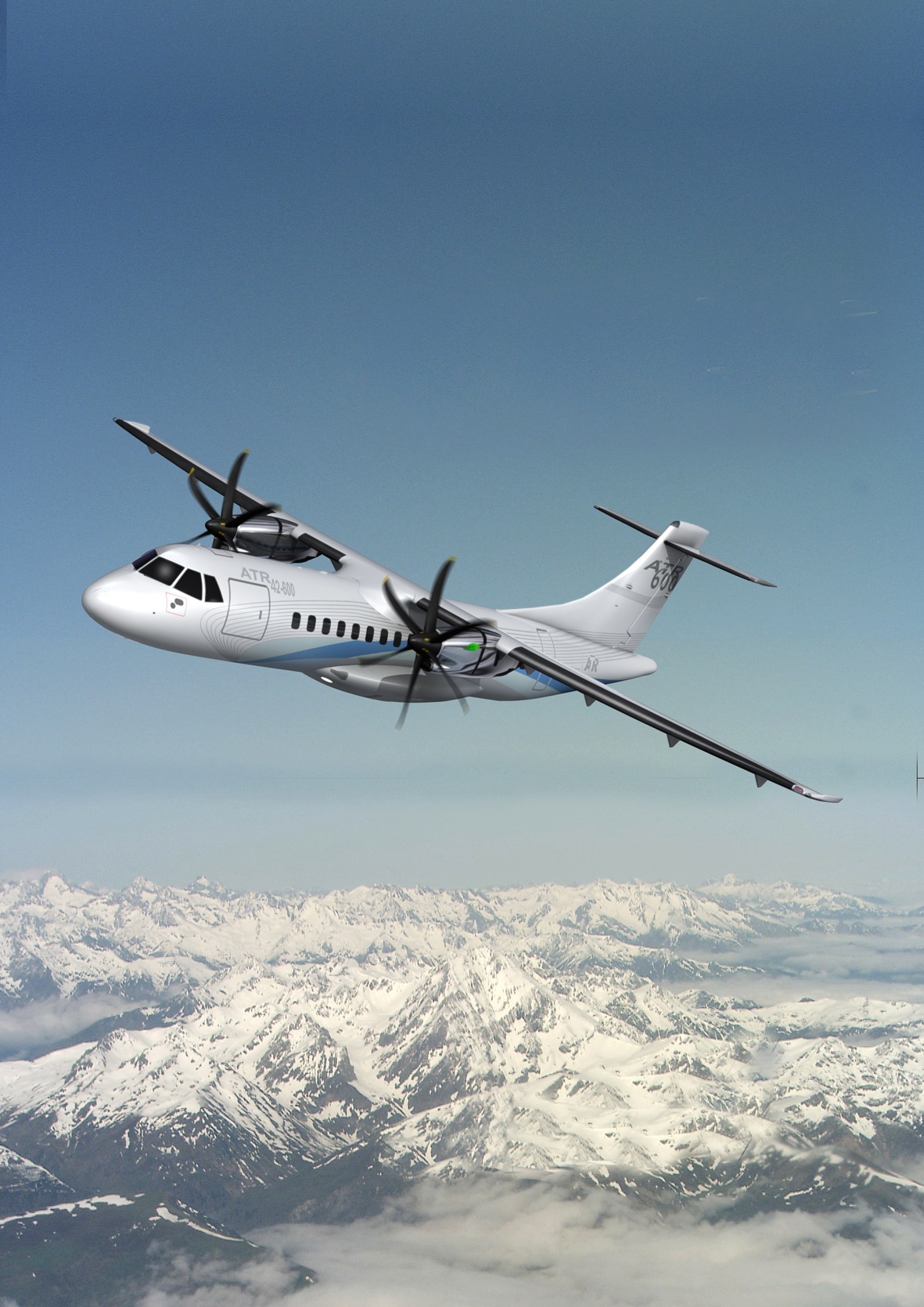PNG Air aims to increase its share of Papua New Guinea’s domestic market while considering international expansion, including to Australia.
The publicly-owned airline announced at the Singapore Airshow an order for three ATR42-600S aircraft, complementing its existing fleet of ATR72-600s.
CEO Paul Abbot sees the ATR42s as an initial order. “There’s certainly interest in me for more,” he says in an interview, noting further purchases depend on the country’s continued economic growth.
Internationally, Australia is an important source of investment and workers for PNG’s resource sector. Abbot wants to look beyond the trunk Brisbane-Port Moresby route, served by three airlines. “We wouldn’t want to be the fourth.”
Abbot sees PNG Air’s greatest Australian potential in Townsville, with Cairns also a possibility. Service to either would be dependent on contract flying, he says. PNG Air codeshares with Virgin Australia.
International expansion could also include the Solomon Islands, but first Abbot wants to continue PNG Air’s 2.5 year quest to serve Indonesian communities over the border.
Abbot attributes the delay, not to protectionism – no airline serves this sector – but political tension.
“There’s probably desire from both sides for it to happen,” he says of the Indonesian and PNG governments. “It’s still on our radar. Eventually, we’ll get there and PNG Air will be the first with service.”
For international expansion northwards, Abbot sees partnerships initially giving PNG Air a virtual presence in the Philippines, Hong Kong and mainland China. First, he needs to increase PNG Air’s relevancy. “We’ve got to consolidate and bring something to the table,” he says of using a domestic stronghold to woo foreign airlines.
“Domestic will always be our backbone.”
Abbot wants to grow PNG Air’s 40-42% domestic market share to over 50%, having already amassed a 50-51% capacity share. Lack of road infrastructure means the country’s only viable transport link is air travel, part of a reverberating economic catalyst. As finances in the country improve, including through foreign investment, air travel will expand and link communities, in turn creating more economic production and generating further demand.
PNG Air’s growth will be faster than what aircraft numbers suggest. Its in-service fleet of seven ATR72-600s will be complemented by six ATR family deliveries.
Three more ATR72s will be delivered between 2022 and 2025. Sandwiched in the middle are the three ATR42s announced in Singapore for delivery in 2023 and 2024.

The six deliveries broadly replace PNG Air’s eight Dash 8-100 aircraft, but this is not a one-for-one replacement owing to the ATR’s higher capacity than the Dash 8. The Dash 8’s retirement is fluid in time and numbers. Abbot is weighing retaining one or two Dash 8s and converting them to freighters.
PNG Air becomes the third disclosed customer for the short take-off and landing (STOL) version. Existing customers are Air Tahiti and lessor Elix Aviation, as well as an undisclosed customer.
While Port Moresby has a long runway, regional runways can be as short as the approximately 850 metres at Tufi. “There’s a push in the PNG government to upgrade these to 900-1,100m,” Abbot says, noting the Asian Development Bank is helping the project. ATR says 500 global airports have runway lengths 800-1,000m.
The ATR42-600s will have 48 seats, but runway limitations even after length extensions could require a payload restriction to 40 passengers. That is still more than the maximum 36 seats on the Dash 8-100. ATR notes the 42-600S allows airlines to expand the STOL market by upwards of 25%.
Aside from the possible Dash 8 freighter conversion, PNG Air will benefit from reducing two pilot pools to one. Its ATR72 pilots can take a short conversion course to also be rated on the ATR42. Abbot estimates the ATR42 has 80% engineering commonality with the ATR72s, benefitting maintenance efficiencies.
Abbot has been with PNG Air for nine years, including the last two as CEO, a tenure that has seen him manage the country’s nuanced market. There is limited ability to stimulate demand while most bookings are made within three to five days before departure.
What PNG’s market may lack in volume size Abbot hopes to have made up for with a stronger presence. Attempting to unify the country’s 800 languages and varied identities often sees corporations default to the bird of paradise flower. “That’s owned by every other company, including Air Niugini,” Abbot says.
PNG Air chose a logo comprising different facets of the company’s culture including drums, Queen Victoria butterflies and war shields. When PNG Air made a 2015 proving flight stopover at the airport home to the mudman featured in the airline’s logo, Abbot noticed women pressed to the airport’s fence to see their local icon on a brand new aircraft.
The success of the country’s economic growth depends, Abbot says, “on how it trickles down.”










